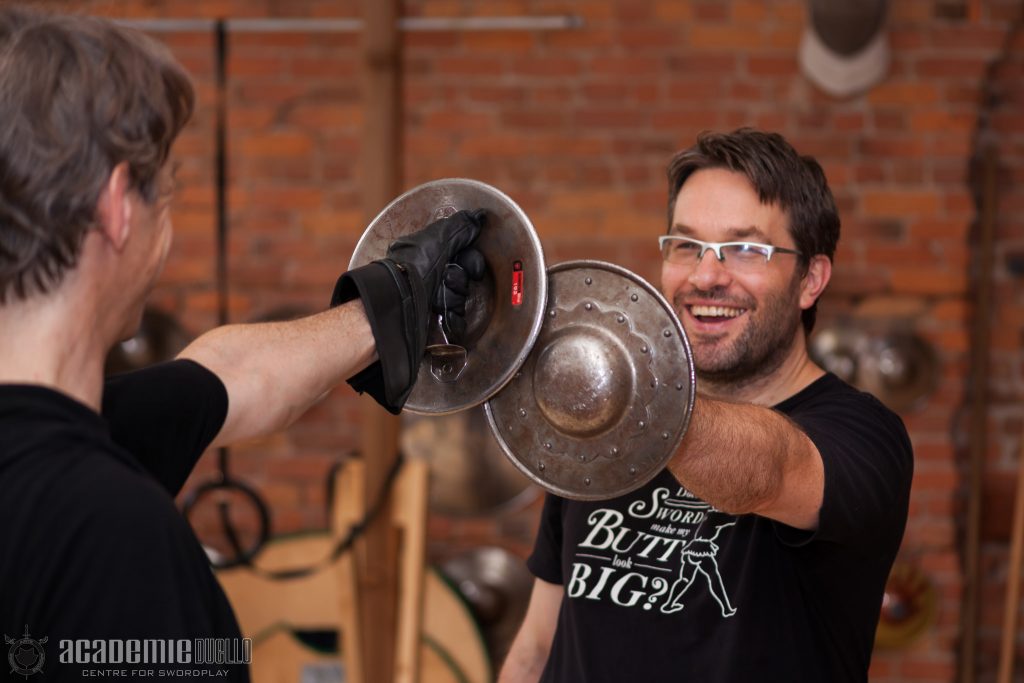Though safety may seem boring, uncool, or like an unnecessary consideration, it is a vital foundation for pursuing excellence in martial arts in both the short- and long-term. Having a solid approach to safety in your group is important for retaining members, keeping your body healthy, and for creating the space for experimentation. At Academie Duello, safety is a core tenet of our practice and we approach it in a variety of ways.
Partner Responsibility
The Martial Triangle is an important approach to being a good partner. Safety is your first priority, being a good partner your second, and learning and applying martial skill is your third. If you have a partner that is acting in a manner that makes you feel unsafe it is important to bring it up with them or with an instructor or group leader.
It's easy to fall into the trap of feeling that it's something that you can "handle". However, at its worst you discover that you cannot and get injured, and at its best you spend your time "handling" your partner and not actually training (or at least not training as effectively as you could be).
When you are learning, your mind must have the space to move away from the whole technique (and it's success) to work on its parts. If you're worried about being hurt you'll have a difficult time allowing yourself to adjust and make errors because your focus will be on the more autonomic response of protecting yourself from injury.
Exercise Design
Exercises can be designed to limit the techniques, targets, and risks. Limiting techniques can allow you to move up in speed and intention while maintaining the focus to keep things safe. You can also restrict targets that have greater risk such as the face and hands.
We use many different types of games to create sparring-like environments that still restrict the options to only a few. This allows people to work on combat skills while keeping the options manageable.
Speed
The most easily influenced side of the force equation (F=ma) is acceleration (a). By reducing speed in an exercise you can maintain distance, targeting, and intention while reducing the potential for damage. Many martial artists from boxers to military special forces use slow speed tactical training as a way to practice deadly techniques at appropriate distances while reducing risk.
Protective Equipment
Using masks, heavy gloves, padded jackets, and appropriately made training weapons can allow much more speed and variability to be introduced to an exercise while maintaining its safety. The main challenge with protective gear is its easy to trust it to protect you more than it actually can. It can also change your attitude toward the art; losing respect for the fragility of your body can make it easy to lose the "martial" in your art.
In the end there is no substitute for control. No matter how much you armour-up, the tools we are using (swords) are force multipliers and there is only so far that equipment can go. So seek to develop precision and awareness and use protective gear as a safety measure both judiciously and with awareness.
Safety is everyone's concern. Take it seriously and be a proactive force in fostering it. If we work together to create safe spaces physically, mentally, and emotionally, we create an environment that allows us to be vulnerable, take risks, and truly grow in our abilities as martial artists and human beings.
